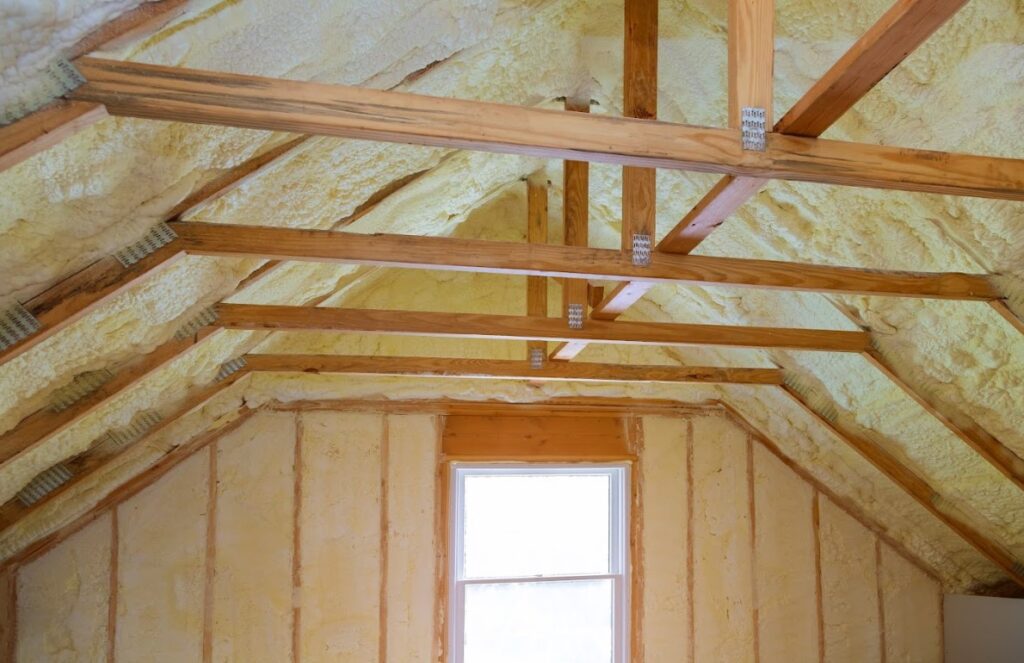Proper attic ventilation is essential for a well-functioning roofing system, but it’s often overlooked until serious problems arise. A balanced ventilation system helps regulate temperature, control moisture, and extend the lifespan of your roof. Whether you’re installing a new roof or maintaining an existing one, understanding how attic ventilation works is key to protecting your investment and improving energy efficiency.
This comprehensive guide to attic ventilation covers everything you need to know—how it works, the risks of poor airflow, different types of vents, and why your roof’s health depends on getting it right.
What Is Attic Ventilation and Why Does It Matter?
Attic ventilation is the process of allowing outside air to enter and exit your attic space, typically through a combination of intake and exhaust vents. The goal is to maintain consistent air movement that prevents excessive heat buildup in the summer and moisture accumulation in the winter.
Without adequate attic ventilation, hot, moist air can become trapped inside your attic, creating an environment that damages your roof from the inside out.
Benefits of Proper Attic Ventilation
- Extends Roof Life: Reduces the chance of shingle damage, rot, and mold
- Improves Energy Efficiency: Keeps your home cooler in summer and prevents ice dams in winter
- Controls Moisture: Minimizes condensation that can damage insulation and structural components
- Protects Indoor Air Quality: Prevents mold growth that can affect your family’s health
According to the U.S. Department of Energy, improving attic airflow can reduce energy use and support better indoor comfort year-round.
How Attic Ventilation Works
Effective attic ventilation is all about airflow. A properly balanced system includes:
1. Intake Vents
Located at the lowest part of the attic (usually soffits or eaves), intake vents let cool, fresh air enter the attic space.
- Purpose: Supply fresh air to push out hot or humid air
- Common types: Soffit vents, edge vents
2. Exhaust Vents
Exhaust vents are installed near the peak of the roof to allow hot air to escape naturally.
- Purpose: Expel hot, moist air from the attic
- Common types: Ridge vents, box vents, gable vents, turbine vents
The stack effect (hot air rising) and wind pressure help create a continuous flow of air through the attic, reducing temperature and moisture.

Risks of Poor Attic Ventilation
Failing to ventilate your attic properly leads to several short- and long-term problems for both your home and your roof.
1. Excessive Heat Buildup
During summer, attic temperatures can soar above 130°F. Without ventilation, this trapped heat radiates into living spaces and causes:
- Higher cooling bills
- Overworked HVAC systems
- Degradation of roofing materials, especially asphalt shingles
2. Moisture Accumulation and Mold
Moisture from cooking, showering, or laundry rises into the attic. Without airflow, it condenses and creates conditions for mold growth and wood rot.
3. Ice Dams in Winter
In cold climates, a warm attic melts snow on the roof. The runoff refreezes at the eaves, causing damaging ice dams that lift shingles and leak water into the home.
4. Shortened Roof Lifespan
Inadequate ventilation speeds up deterioration. You might notice curled or cracked shingles, rusted nails, or moldy insulation—all signs of poor attic airflow.
Types of Attic Ventilation Systems
There are many attic ventilation solutions, and the best system often depends on your roof type, attic size, and climate. Here’s a breakdown of the most common systems:
Ridge Vent System
Installed along the roof’s peak, ridge vents are among the most effective exhaust solutions. They offer continuous ventilation with a low-profile design.
- Pros: Uniform air exit, aesthetically pleasing
- Cons: Requires soffit vents for balanced intake
Soffit Vents
These are the most common intake vents, placed under the eaves. They work best when paired with ridge or gable vents.
- Pros: Continuous intake, improves air circulation
- Cons: Must remain clear of insulation blockages
Gable Vents
Mounted on the exterior walls near the roof peak, gable vents work by creating cross-ventilation when combined with another exhaust system.
- Pros: Easy to install
- Cons: Less effective alone in large attics
Roof Louvers (Box Vents)
Static box vents allow heat and moisture to escape. These are installed in sections across the roof.
- Pros: Simple, affordable
- Cons: May require multiple units for proper airflow
Turbine Vents
Also called “whirlybirds,” these vents spin with the wind to pull air out of the attic.
- Pros: Energy-free, boosts airflow on windy days
- Cons: Less effective in calm weather
The University of Florida IFAS Extension offers a helpful guide on proper attic ventilation methods and their effect on home performance.
How to Calculate Proper Ventilation for Your Attic
Ventilation is measured in net free area (NFA), or the total space through which air can flow freely. Most experts recommend a ratio of 1 square foot of ventilation per 150 square feet of attic floor space, with a 50/50 split between intake and exhaust.
Ventilation Formula Example:
- Attic size: 1,500 sq. ft.
- Required NFA: 10 sq. ft. (1,500 ÷ 150)
- Intake vents: 5 sq. ft.
- Exhaust vents: 5 sq. ft.
Your roofing contractor can help calculate the specific needs based on your attic configuration, roof slope, and vent style.
Signs You May Need Better Attic Ventilation
It’s not always obvious that attic ventilation is the issue, but here are some red flags to watch for:
- Attic feels hot and stagnant even in cooler weather
- Roof decking feels damp or shows signs of mildew
- Ice dams form regularly during winter
- HVAC system struggles to maintain indoor temperature
- Musty odors or mold patches appear in upper floors
- High energy bills during summer and winter months
If you’re noticing any of these problems, a professional roof and attic inspection can quickly identify ventilation deficiencies.
Upgrading Your Ventilation with a New Roof
If you’re replacing your roof, it’s the perfect time to upgrade your attic ventilation. Most modern roofing systems include ridge vents as a standard feature, along with proper intake vents and insulation adjustments.
What Great Roofing Recommends:
- Install continuous soffit and ridge vent systems
- Ensure insulation baffles keep intake vents clear
- Check for and seal any air leaks from the home to the attic
- Use high-quality underlayment that resists moisture
We ensure that all new roof installations include a full attic ventilation assessment to improve performance and avoid future issues.
Let Great Roofing Help You Optimize Your Attic Ventilation
Understanding attic airflow is critical to maintaining your home’s energy efficiency, roof longevity, and indoor air quality. This guide to attic ventilation highlights how important it is to get it right—from the type of vents you use to how much airflow your home needs.
At Great Roofing, we specialize in roofing systems that combine durability, beauty, and function. Every roofing project includes a ventilation evaluation to ensure your attic stays dry, your roof lasts longer, and your home stays comfortable through every season.
Ready to improve your attic ventilation or inspect your current system?
Get a complimentary estimate now and let our experts recommend a ventilation plan that protects your roof and your home.



